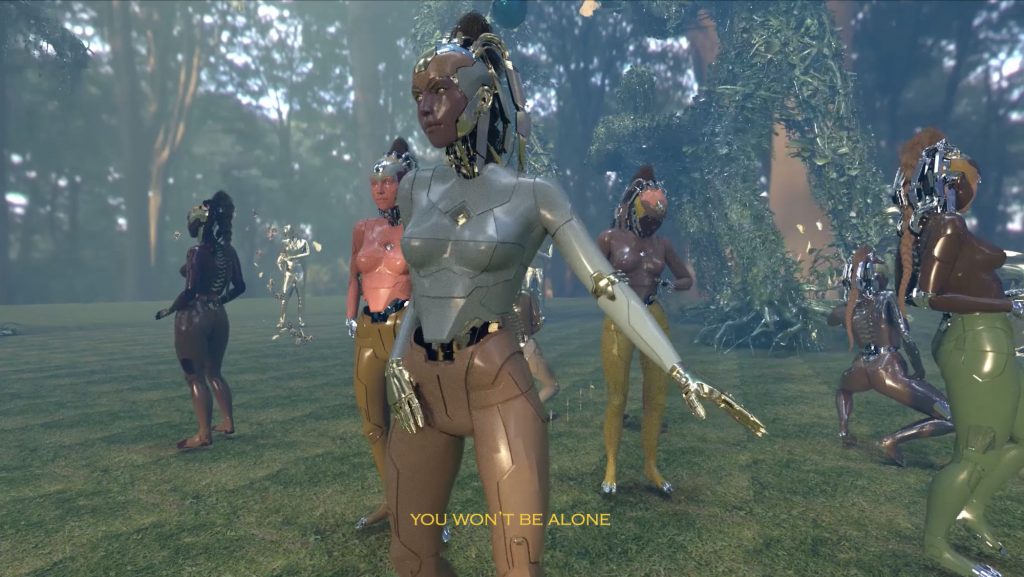
Jacolby Satterwhite, We Are in Hell When We Hurt Each Other, 2020, HD digital color video and 3D animation with sound, 24:22, Courtesy of Mitchell-Innes & Nash, New York
Jacolby Satterwhite, We Are in Hell When We Hurt Each Other, 2020, HD digital color video and 3D animation with sound, 24:22, Courtesy of Mitchell-Innes & Nash, New York

From family VHS tapes and 3D printed sculptures to a virtual reality album made in collaboration with Nick Weiss of TeengirlFantasy to accompany his feature-length animation series Birds in Paradise (2017–19), Jacolby Satterwhite defies the limits of materiality, genre, and western canonizing to build universes that centralize the body as a portal. In seductive and disquieting ways, he unveils the operations of technocapitalism, the ever-present codes of enslavement, and planetary toxicity.
His inspiration ranges from 1990s video games to New York’s queer nightlife and from Caravaggio paintings to Grace Jones, yet Satterwhite’s most enduring influence has been his mother Patricia Satterwhite, who opened his mind to the possibilities of art as a restorative space to plot a deeper consciousness of the world through her fragmented, schizophrenic mental state. She made thousands of illustrations of various fantastical inventions, which not only enabled her to attune with the functionality of things in her midst but also harnessed her desire for success on the Home Shopping Network. Her archive of drawings, song lyrics, and a capella, folk, and gospel-inspired cassette tape recordings are a steady pool of reference. “I didn’t understand how poignant that practice was, as this cathartic self-care ritual that went into place when she couldn’t get insurance or proper mental health help,” Satterwhite noted.
In Satterwhite’s work, the circuit of consumption is plotted in libidinal flourishes but also brutal extractions, as gender-fluid bodies entangle amid scenes of dancing, flogging, and spinning. In the film’s floating space, generated through the 3D animation program Maya, the artist keys himself and his associates into transforming landscapes to play hybrid protagonists that unleash a pleasure matrix of domination and submission. We Are in Hell When We Hurt Each Other (2020) features a performance arena and luminous, revolutionary Black CGI fembots that reenact in the artist’s body movements to animate their truth from a society of pain, the muscle memory and generational trauma of racial violence. Over trip-hop and electronic beats, Patricia Satterwhite’s voice reminds us how pain divides but also stitches us together in common anguish.
Jacolby Satterwhite, We Are in Hell When We Hurt Each Other, 2020, HD digital color video and 3D animation with sound, 24:22, Courtesy of Mitchell-Innes & Nash, New York